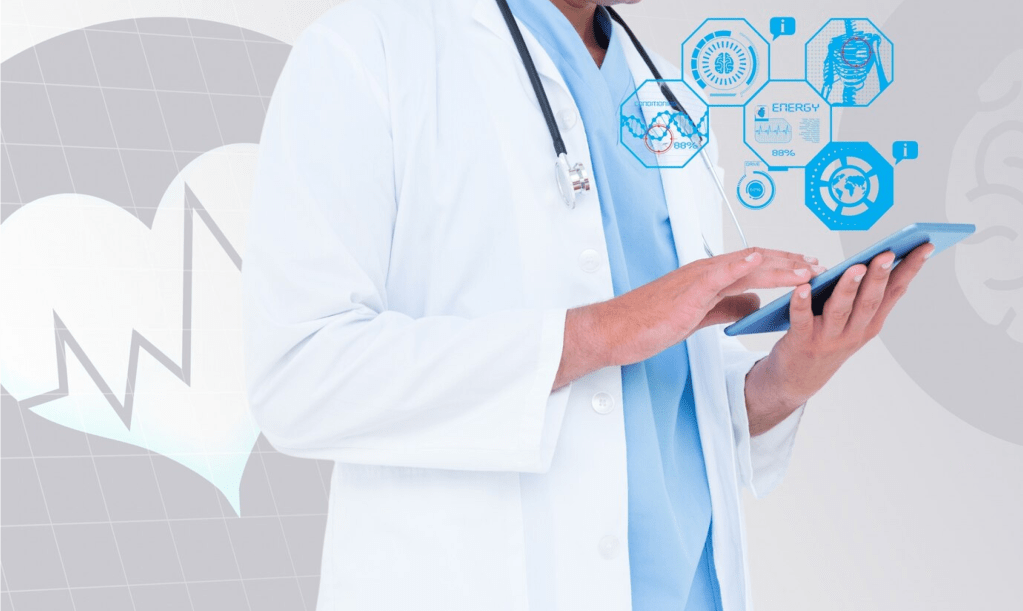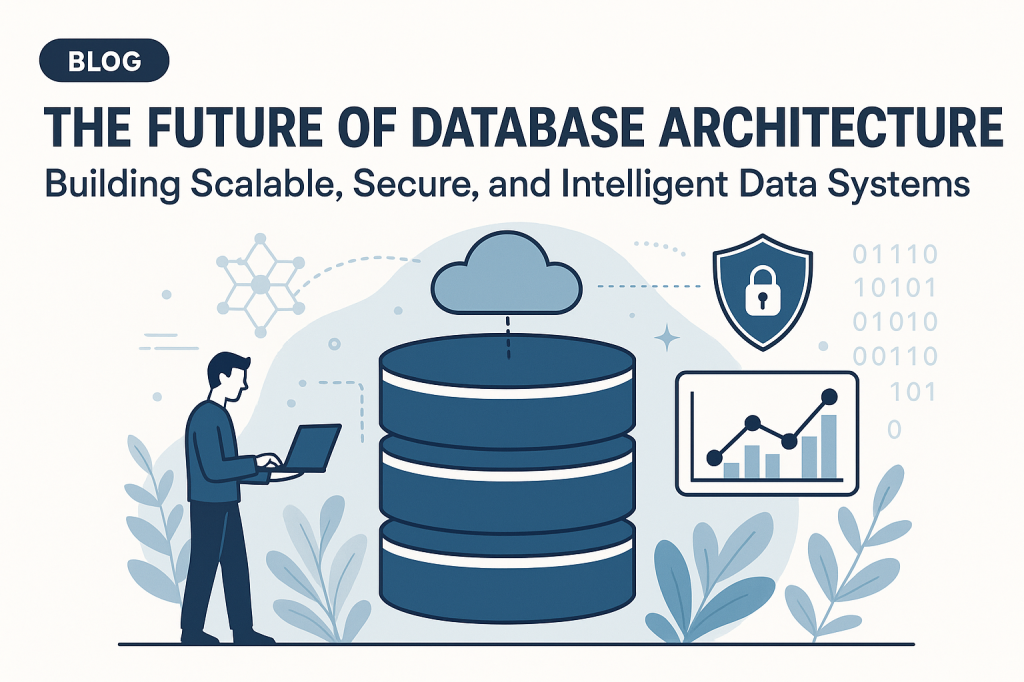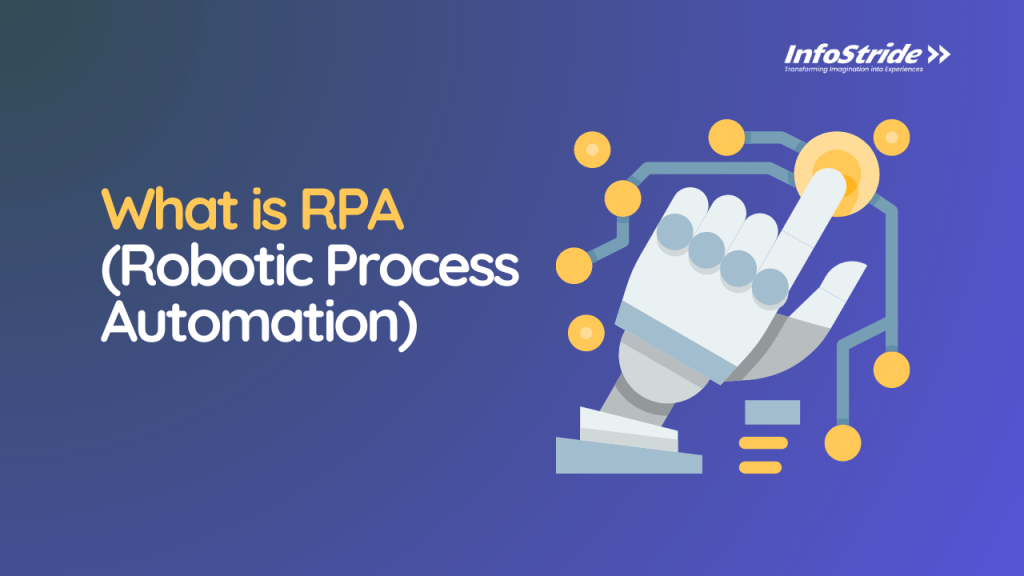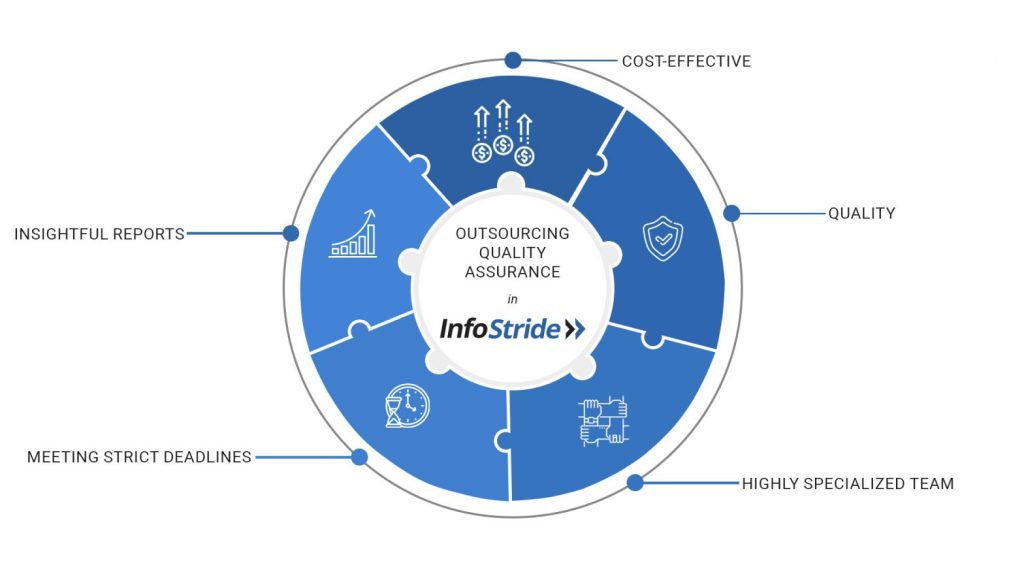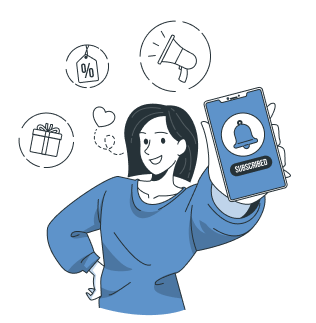As we step into the year 2024, the healthcare app market continues to expand(expected to reach USD 269.31 billion by 2032) propelled by groundbreaking advancements and an insatiable demand for innovative solutions. The integration of new technologies, from artificial intelligence to wearable devices, has ushered in an era of unprecedented possibilities, promising not only enhanced patient care but also a surge in the potential for healthcare app developers.
In the midst of this burgeoning potential, our focus turns to a critical aspect of healthcare app development – the cost. The average cost of developing a healthcare app typically falls within the range of $100,000 to $500,000. However, it’s essential to note that this is a generalized figure, and the actual cost varies significantly across different categories of healthcare apps. Furthermore, numerous factors influence the overall development expenditure.
Throughout this blog, we will navigate through these complexities, shedding light on the diverse types of healthcare apps, their key features, and the multitude of factors that contribute to their unique development costs. Join us on this exploration as we unveil the layers of this multifaceted topic, providing insights that are invaluable for businesses, entrepreneurs, and healthcare organizations alike. Without further ado, let’s get underway.
Average Costs of Healthcare App Development
In this section, we’ll look at the average cost to build a healthcare app across various categories. From the facilitation of virtual medical consultations to the management of comprehensive hospital systems, each category brings its own set of challenges and opportunities, impacting the financial investment required.
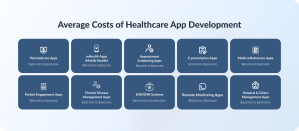
1. Telemedicine Apps
Telemedicine App Development Cost(Estimate) -: $100,000 to $500,000
Telemedicine apps revolutionize healthcare delivery by connecting patients and healthcare providers remotely, fostering timely consultations and improving accessibility.
Features and Use Cases:
- Real-time Video Consultations: Patients can virtually connect with healthcare professionals for immediate medical advice, diagnosis, and follow-up consultations.
- Secure Messaging: Enables secure communication between patients and providers, facilitating discussion of health concerns, sharing medical information, and receiving non-emergency guidance.
- EHR Integration: Streamlines access to patient records, ensuring healthcare professionals have comprehensive information to make informed decisions during virtual consultations.
- Prescription Management: Allows healthcare providers to issue digital prescriptions, enhancing the convenience and speed of medication issuance and fulfillment.
- Appointment Scheduling: Simplifies the process of booking virtual appointments, helping patients and providers efficiently manage their schedules.
- Remote Monitoring: Enables continuous tracking of patients’ vital signs and health metrics, facilitating proactive intervention and personalized care.
Popular Examples:
- Teladoc: A widely used telemedicine platform providing on-demand virtual healthcare services.
- Amwell: Offers telehealth services, including video visits with licensed medical professionals.
- Doctor on Demand: Connects patients with board-certified physicians, psychiatrists, and psychologists for virtual consultations.
Also Read: Doctor On Demand Business Model
2. mHealth Apps (Mobile Health)
mHealth apps empower users to take control of their health by providing tools for fitness tracking, nutrition monitoring, medication management, and personalized health insights.
mHealth/Fitness App Development Cost(Estimate): $80,000 to $300,000
Features and Use Cases:
- Fitness Tracking: Monitors physical activity, offering insights into steps taken, calories burned, and overall activity levels, promoting a healthy lifestyle.
- Nutrition Monitoring: Allows users to log and track dietary habits, providing personalized recommendations for a balanced and nutritious diet.
- Medication Reminders: Sends timely reminders for medication intake, improving adherence to prescribed treatment plans.
- Wearables Integration: Syncs with wearable devices to collect real-time health data, enhancing the accuracy of health assessments.
- Health Analytics: Provides users with data-driven insights into health trends, facilitating informed decision-making for lifestyle adjustments.
- Telehealth Integration: Integrates with telemedicine services for a seamless transition from health monitoring to virtual consultations.
Popular Examples:
- MyFitnessPal: Tracks diet, exercise, and offers personalized insights for a healthier lifestyle.
- Fitbit: Integrates with wearables to monitor physical activity, sleep, and heart rate.
- Ada Health: Combines AI and personal health data to provide personalized health assessments.
3. Appointment Scheduling Apps
Appointment scheduling apps streamline the process of booking, rescheduling, and canceling healthcare appointments, enhancing overall patient experience.
Appointment Scheduling App Development Cost (Estimate): $50,000 to $150,000
Features and Use Cases:
- User-friendly Interface: Offers an intuitive platform for users to easily navigate and manage their appointment schedules.
- Calendar Integration: Syncs with users’ calendars to avoid scheduling conflicts and provides automated reminders.
- Real-time Availability: Displays real-time availability of healthcare professionals, allowing users to choose convenient time slots.
- Automated Notifications: Sends push notifications and emails to remind users of upcoming appointments, reducing no-show rates.
- Appointment History: Maintains a record of past and upcoming appointments, providing a comprehensive overview of healthcare engagements.
- Telehealth Integration: Facilitates scheduling and managing virtual appointments for remote consultations.
Popular Examples:
- Zocdoc: Allows users to find and book appointments with healthcare professionals.
- BookMyDoctor: Facilitates online appointment scheduling with real-time availability.
- Doctolib: Offers a comprehensive platform for patients to book appointments and manage healthcare.
4. E-prescription Apps
E-prescription apps digitize the prescription process, offering a secure and efficient method for healthcare professionals to send prescriptions to pharmacies.
E-prescription App Development Cost(Estimate): $70,000 to $200,000
Features and Use Cases:
- Secure Data Transmission: Ensures the encrypted and secure transmission of prescription information between healthcare providers and pharmacies.
- Medication History Integration: Accesses and integrates patients’ medication history, aiding healthcare professionals in making informed prescription decisions.
- Compliance with Regulations: Adheres to healthcare regulations and standards, ensuring the legality and security of electronic prescriptions.
- Pharmacy Communication: Facilitates communication between healthcare providers and pharmacies, reducing errors in prescription fulfillment.
- Patient Access: Allows patients to access and retrieve their digital prescriptions, promoting convenience and reducing paperwork.
- Integration with EHR Systems: Seamlessly integrates with Electronic Health Record (EHR) systems for comprehensive patient management.
Popular Examples:
- Surescripts: A leading platform facilitating electronic prescribing and medication management.
- DrFirst: Provides e-prescribing solutions, medication history, and secure communication.
- Practice Fusion: Offers an integrated EHR system with e-prescribing capabilities.
5. Medical Reference Apps
Medical reference apps provide healthcare professionals and students with comprehensive medical information, drug databases, and reference materials.
Medical Reference App Development Cost(Estimate): $60,000 to $150,000
Features and Use Cases:
- Drug Information Database: Enables quick access to detailed information about medications, including dosages, side effects, and interactions.
- Disease Databases: Offers in-depth information on various medical conditions, aiding healthcare professionals in diagnosis and treatment planning.
- Medical Literature Access: Provides access to medical journals, articles, and research, keeping healthcare professionals updated on the latest advancements.
- Offline Access: Allows users to access reference materials without an internet connection, ensuring availability in various healthcare settings.
- Search Functionalities: Facilitates quick and precise searches for specific medical information, saving time in critical situations.
- Personalized Libraries: Enables users to create and organize personalized libraries of reference materials for easy access to frequently used information.
Popular Examples:
- UpToDate: An evidence-based clinical decision support resource providing access to medical information.
- Epocrates: Offers drug reference and interaction check, disease information, and medical calculators.
- Medscape: A comprehensive medical app providing news, reference, and educational content for healthcare professionals.
6. Patient Engagement Apps
Patient engagement apps aim to involve and empower patients in their healthcare journey by providing health education, appointment reminders, and communication tools.
Patient Engagement App Development Cost(Estimate): $80,000 to $250,000
Features and Use Cases:
- Health Education Content: Delivers personalized health information, treatment plans, and lifestyle recommendations to enhance patient understanding.
- Appointment Reminders: Sends timely reminders for upcoming appointments, reducing the likelihood of missed visits and promoting continuity of care.
- Secure Messaging with Providers: Facilitates secure communication between patients and healthcare providers, allowing for questions, updates, and follow-up discussions.
- Medication Adherence Tracking: Monitors and tracks patients’ adherence to medication regimens, improving treatment outcomes and reducing complications.
- Symptom Tracking: Enables patients to record and track symptoms, providing valuable data for healthcare providers to make informed decisions.
- Integrated Wearables Data: Integrates data from wearable devices to provide a holistic view of patients’ health and well-being.
Popular Examples:
- MyChart: A patient portal offering secure messaging, appointment scheduling, and access to medical records.
- Pfizer Meds: Focuses on medication adherence through reminders, educational content, and progress tracking.
- Wellframe: Provides personalized care plans, educational content, and real-time support for patients managing chronic conditions.
7. Chronic Disease Management Apps
Chronic disease management apps assist individuals in managing long-term health conditions, offering tools for symptom tracking, medication management, and communication with healthcare providers.
Chronic Disease Management App Development Cost(Estimate) : $100,000 to $400,000
Features and Use Cases:
- Symptom Tracking: Allows users to log and monitor symptoms, providing healthcare providers with valuable data for treatment adjustments.
- Medication Management: Facilitates the organization of medication regimens, sends reminders for timely intake, and tracks adherence.
- Communication with Healthcare Providers: Enables secure communication between patients and healthcare professionals for timely updates, advice, and monitoring.
- Personalized Care Plans: Develops and implements personalized care plans tailored to individual health conditions, fostering patient engagement.
- Integration with Health Devices: Integrates with health monitoring devices (e.g., glucose meters, blood pressure monitors) for real-time data collection.
- Educational Resources: Provides educational content on managing specific chronic conditions, empowering patients to make informed lifestyle choices.
Popular Examples:
- Livongo: Focuses on diabetes management with tools for glucose monitoring, coaching, and data tracking.
- Propeller Health: Aids in the management of respiratory conditions through inhaler sensor technology and personalized insights.
- Omada Health: Offers digital care programs for conditions like diabetes and hypertension, emphasizing lifestyle changes and support.
8. EHR/EMR Systems
Electronic Health Record (EHR) and Electronic Medical Record (EMR) systems digitize patient records, providing a comprehensive and centralized platform for healthcare information.
EHR/EMR System Development Cost(Estimate) : $200,000 to $1,000,000+
Features and Use Cases:
- Patient Demographics and History: Stores and manages detailed patient information, including demographics, medical history, and previous treatments.
- Clinical Notes and Documentation: Facilitates the recording and retrieval of clinical notes, treatment plans, and other essential documentation.
- Medication Management: Tracks prescribed medications, dosage information, and patient adherence, promoting medication safety.
- Integration with Lab Results: Seamlessly integrates and displays laboratory results, aiding healthcare professionals in making informed decisions.
- Appointment Scheduling and Billing: Manages appointment schedules, automates billing processes, and tracks financial transactions related to patient visits.
- Interoperability with Other Systems: Ensures compatibility and data exchange with other healthcare systems, promoting coordinated and efficient care.
Popular Examples:
- Epic Systems: A widely used EHR system offering integrated solutions for healthcare organizations.
- Cerner: Provides EHR solutions with a focus on interoperability and improving healthcare delivery.
- Athenahealth: Offers cloud-based EHR and practice management solutions for healthcare providers.
9. Remote Monitoring Apps
Remote monitoring apps track patients’ health metrics and vital signs in real-time, allowing healthcare professionals to monitor and intervene as needed.
Remote Monitoring App Development Cost(Estimate): $80,000 to $300,000
Features and Use Cases:
- Continuous Vital Signs Monitoring: Monitors parameters like heart rate, blood pressure, and oxygen levels, providing timely alerts for any anomalies.
- Health Data Visualization: Presents health data in intuitive visualizations, allowing healthcare providers to quickly assess trends and changes.
- Alerts and Notifications: Sends immediate alerts to healthcare providers in case of critical health events, enabling rapid intervention.
- Patient Education and Feedback: Educates patients on interpreting health data and provides feedback on lifestyle choices impacting their monitored metrics.
- Integration with Wearables: Syncs with wearable devices to collect and analyze data, providing a comprehensive overview of patients’ well-being.
- Telehealth Integration: Facilitates virtual consultations based on real-time health data, enabling remote healthcare delivery.
Popular Examples:
- Biofourmis: Utilizes wearable sensors and AI to monitor and manage patients with chronic conditions.
- iRhythm Technologies: Specializes in continuous monitoring solutions, particularly for cardiac arrhythmias.
- Current Health: Combines wearable devices and remote monitoring for proactive healthcare management.
10. Hospital & Clinics Management Apps
Hospital and clinics management apps streamline administrative processes, optimize resource utilization, and enhance overall efficiency in healthcare facilities.
Hospital & Clinics Management App Development Cost(Estimate): $150,000 to $500,000+
Features and Use Cases:
- Appointment Scheduling and Queue Management: Optimizes patient flow by efficiently scheduling appointments and managing waiting queues.
- Electronic Billing and Invoicing: Automates billing processes, generates invoices, and tracks financial transactions for services rendered.
- Resource Allocation and Staff Management: Ensures optimal allocation of resources, including staff and equipment, based on real-time demand and availability.
- Electronic Health Records (EHR) Integration: Seamlessly integrates with EHR systems to access patient records, ensuring coordinated and informed care.
- Inventory and Supply Chain Management: Tracks and manages inventory levels of medical supplies, medications, and equipment to prevent shortages and wastage.
- Analytics and Reporting: Provides data analytics and reporting tools for administrators to analyze performance, make informed decisions, and plan for improvements.
Popular Examples:
- Cerner PowerChart: A comprehensive solution for hospital management, offering features for EHR, billing, and analytics.
- McKesson Paragon: Provides integrated solutions for hospitals, including EHR, billing, and supply chain management.
- eHospital Systems: Offers a modular hospital management system with features for scheduling, billing, and resource management.
Factors Influencing Healthcare App Development Cost & Key Considerations
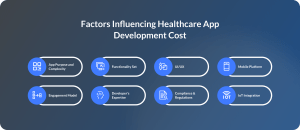
Embarking on the development of a healthcare app is a journey teeming with innovation, but understanding the financial landscape is equally crucial. In this section, we’ll discuss the intricate factors that sway the financial equation, delving into what influences the overall cost of bringing a medical app to life. From the profound impact of UI/UX design to the nuanced decisions of mobile platform choices, each element contributes to the overall costs.
Healthcare App Purpose and Complexity:
The development costs of a healthcare app are deeply rooted in its purpose and complexity. For apps geared towards advanced medical functionalities or requiring intricate algorithms, it’s advisable to approach the development process strategically. Different purposes may call for tailored strategies — for instance, considering modular development for scalable functionalities. When dealing with complex algorithms, an iterative development approach can be beneficial, allowing for continuous refinement.
By adopting tailored strategies for distinct purposes and complexities, development efforts can be optimized, potentially reducing costs while ensuring the app meets its intended goals.
Functionality Set (Core vs Advanced):
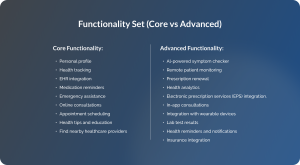
The decision-making process around feature selection is paramount in healthcare app development. It involves strategically prioritizing features to align with the core goals of the application. Begin by identifying essential features that directly contribute to fulfilling the primary purpose of the app. Prioritize functionalities that enhance user experience, address critical healthcare needs, and ensure seamless functionality. Consider user feedback and market research to understand the features that will bring the most value to your target audience.
By strategically prioritizing features based on their impact and necessity, you not only enhance the app’s capabilities but also optimize the financial investment, focusing resources where they contribute most effectively to the app’s success.
UI/UX Design:
In healthcare app development, achieving the optimal balance between sophistication and user-friendliness is not just an art; it’s a critical financial consideration. Striking this balance involves understanding your user base and their needs. Begin by prioritizing essential features that enhance usability, ensuring a seamless experience. Incorporate sophisticated design elements strategically, focusing on enhancing functionality rather than unnecessary complexity.
Regular user testing and feedback loops can help refine the design, ensuring that sophistication adds value without compromising user-friendliness. This approach not only enhances the user experience but also contributes to cost-effectiveness by allocating resources where they matter most.
Mobile Platform Choice:
Choosing the mobile platform(s) for app deployment is a critical decision with significant financial implications. Opting for a single platform or both iOS and Android involves careful consideration. While developing for both platforms can widen the app’s reach, it also necessitates additional resources, impacting the budget. Striking the right balance involves assessing your target audience and their preferences.
If your primary users are on a specific platform, focusing initially on that platform can be a cost-effective approach. As the app gains traction, expansion to other platforms can be strategically planned, aligning with user feedback and resource availability. This decision isn’t just about reaching a wider audience; it’s about a phased approach that aligns with both your user base and budget constraints.
Engagement Model & Geographic Location of Development Team:
Selecting the right engagement model and geographic location for your development team is a pivotal decision that goes beyond logistics; it’s a strategic move that profoundly impacts your budget. The ideal selection criteria involve assessing your project’s scope, timeline, and flexibility needs. For projects with well-defined requirements and a fixed timeline, a fixed-price model can offer predictability in costs. In contrast, projects with evolving requirements may benefit from the flexibility of an hourly rate or dedicated team model.

Geographic location plays a role, too; consider not just cost but also the team’s expertise and cultural fit. An ideal strategy aligns your engagement model and location with your project’s unique dynamics, ensuring a harmonious balance between cost-effectiveness and project success.
Developer Expertise & Team Size:
Selecting the right development team/resources for your project is a strategic process that extends beyond mere assembly; it involves building a proficient workforce aligned with your financial blueprint. When evaluating potential teams, consider their expertise in relevant technologies, past experience in healthcare software development services, and their understanding of your project’s specific needs. Assess the team’s flexibility, communication skills, and their ability to adapt to evolving requirements. Furthermore, inquire about their portfolio to gauge the success of similar projects they have undertaken.
By prioritizing these criteria, you can ensure that the chosen development team is not just a collection of individuals but a dedicated force equipped to bring your healthcare app vision to fruition within your specified financial parameters.
Compliance & Regulations:
In healthcare app development, strict adherence to regulations is crucial, not only as a legal obligation but also as a key determinant of costs. Ensuring compliance with the Health Insurance Portability and Accountability Act (HIPAA) standards is foundational, safeguarding the privacy of patient information. Simultaneously, on an international scale, integrating compliance with the General Data Protection Regulation (GDPR) extends beyond regulatory adherence; it represents a strategic commitment to prioritizing user data privacy.
In the United States, aligning with the standards set by the Office for Civil Rights (OCR) is indispensable not just for regulatory adherence but also for mitigating potential legal implications. The intricacies of developing systems aligned with HIPAA, GDPR and OCR standards all contribute to the overall development cost. Thus, regulatory compliance, while essential, introduces factors that directly influence the overall financial scope of the healthcare app project.
IoT Integration:
The integration of IoT into healthcare apps is vital, offering transformative capabilities that enhance patient care and data management. When considering IoT integration, it’s imperative to align its implementation with specific healthcare needs. Identifying key areas where IoT can bring tangible benefits, such as remote patient monitoring or real-time data collection, is crucial.
Additionally, adopting a phased approach to IoT integration allows for systematic implementation, minimizing both technical and financial risks. By strategically incorporating IoT functionalities that directly contribute to improved healthcare outcomes, the integration becomes not only a technological advancement but a judicious investment in elevating the app’s capabilities while managing budget constraints effectively.
Technology Stack In Healthcare App Development
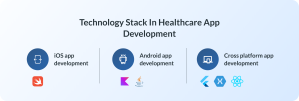
In healthcare app development, the choice of a robust technology stack is akin to architecting the foundation of a skyscraper. The technology stack—comprising programming languages, frameworks, databases, and more—profoundly influences the app’s performance, scalability, and security. In this section, we’ll dive into the intricacies of selecting the right technology stack for healthcare apps, offering insights into the key considerations that guide this critical decision-making process.
Programming Languages:
Selecting the appropriate programming language is a foundational decision. Languages like Swift and Objective-C are commonly chosen for iOS app development, while Java and Kotlin are prevalent for Android. Cross-platform frameworks such as React Native or Flutter provide versatility, allowing developers to code for both platforms simultaneously.
Frameworks:
Frameworks streamline development processes. In healthcare, where efficiency is paramount, choosing frameworks like Angular, React, or Vue.js for front-end development can enhance user interfaces. For back-end development, frameworks like Django (Python), Ruby on Rails, or Node.js are popular choices for their scalability and ease of development.
Databases:
The nature of healthcare data demands robust database management. Structured Query Language (SQL) databases like MySQL and PostgreSQL are reliable choices for structured data. NoSQL databases such as MongoDB or Cassandra excel in handling unstructured healthcare data, offering flexibility and scalability.
Cloud Services:
Cloud computing is a game-changer, providing scalability, security, and accessibility. Services like Amazon Web Services (AWS), Microsoft Azure, or Google Cloud Platform (GCP) offer a range of tools and resources for healthcare app development, ensuring seamless integration and data storage.
Security Protocols:
Security is paramount in healthcare apps. Implementing secure socket layer (SSL) encryption, two-factor authentication, and adhering to OAuth standards are crucial. Integrating robust security protocols and compliance measures ensures the confidentiality and integrity of patient data.
APIs and Interoperability:
Healthcare apps often need to interact with other systems. Well-defined Application Programming Interfaces (APIs) and interoperability standards, such as Fast Healthcare Interoperability Resources (FHIR), facilitate seamless data exchange between different healthcare systems and applications.
Machine Learning and AI:
For apps incorporating advanced features like diagnostic algorithms for predictive analytics, integrating machine learning and AI technologies is pivotal. Frameworks like TensorFlow or PyTorch provide robust foundations for developing and deploying machine learning models in healthcare applications.
Telemedicine and Communication Tools:
In the era of telemedicine, integrating communication tools is essential. Utilizing platforms like WebRTC for real-time communication or integrating telehealth APIs enhances the app’s capabilities for remote patient consultations and communication.
Choosing the right technology stack involves a careful consideration of the app’s requirements, scalability, and long-term vision. By navigating through these components with a strategic mindset, healthcare app developers can construct a technology stack that not only meets current needs but also lays the groundwork for future innovations in patient care and digital health solutions.
Choosing The Ideal Healthcare App Development Company
Selecting the right partner is not merely a transactional decision; it’s a strategic alliance that can make the difference between a functional app and a transformative healthcare solution. The journey towards crafting a healthcare app necessitates a collaborator who not only understands the intricacies of the healthcare sector but is also adept at translating your vision into a tangible, user-centric reality.
Also Read: How to Develop a Healthcare App in 2024
InfoStride: Your Trusted Healthcare App Development Company
Catering to the diverse needs of mid-sized, small-scale, and enterprise-grade clients, InfoStride has honed its proficiency in crafting solutions that transcend expectations. Whether conceptualizing and launching an MVP to test the waters or delivering a full-fledged, scalable healthcare solution, InfoStride is poised to meet the unique demands of your project.
Our journey is marked by successful collaborations that have not only addressed specific project needs but have also transformed healthcare delivery across various domains. The InfoStride team, comprised of seasoned professionals, navigates the intricate landscape of healthcare regulations, technological innovations, and user-centric design with finesse. We understand that each healthcare project is unique, demanding a tailored approach that aligns with your vision, budget, and scalability requirements.
At InfoStride, our commitment extends beyond the development phase. We are dedicated to forging enduring partnerships, providing continuous support, and ensuring that your healthcare app evolves with the dynamic landscape of healthcare technology. With a track record of delivering impactful solutions, we invite you to embark on a transformative journey with InfoStride—a partner that not only understands your project’s intricacies but is poised to be an architect of success in the ever-evolving realm of healthcare app development.
Frequently Asked Questions
1. What factors should be prioritized when estimating the cost to build a healthcare app?
Estimating the cost to build a healthcare app involves considering factors such as the complexity of the feature set, UI/UX design intricacies, the expertise of the development team, mobile platform choices, engagement models, regulatory compliance requirements, IoT integration, and more.
2. How does the choice of a technology stack impact the performance and security of a healthcare app?
The technology stack, encompassing programming languages, frameworks, databases, and more, plays a crucial role in determining the app’s performance, scalability, and security. Choosing the right stack ensures optimal functionality, data management, and security measures aligned with healthcare industry standards.
3. Why is regulatory compliance essential in healthcare app development, and how does it affect costs?
Regulatory compliance, such as adherence to HIPAA and GDPR standards, is vital for ensuring the privacy and security of patient information. Integrating compliance features introduces complexities to development efforts, impacting both time and costs in the healthcare app development process.
4. What criteria should be considered when selecting a healthcare app development services provider?
Choosing an ideal healthcare app development services provider requires evaluating factors such as the partner’s expertise in healthcare, understanding of regulatory requirements, experience in developing for various client scales (mid, small, enterprise), proficiency in building MVPs to full-fledged solutions, and a commitment to ongoing support and partnership.
